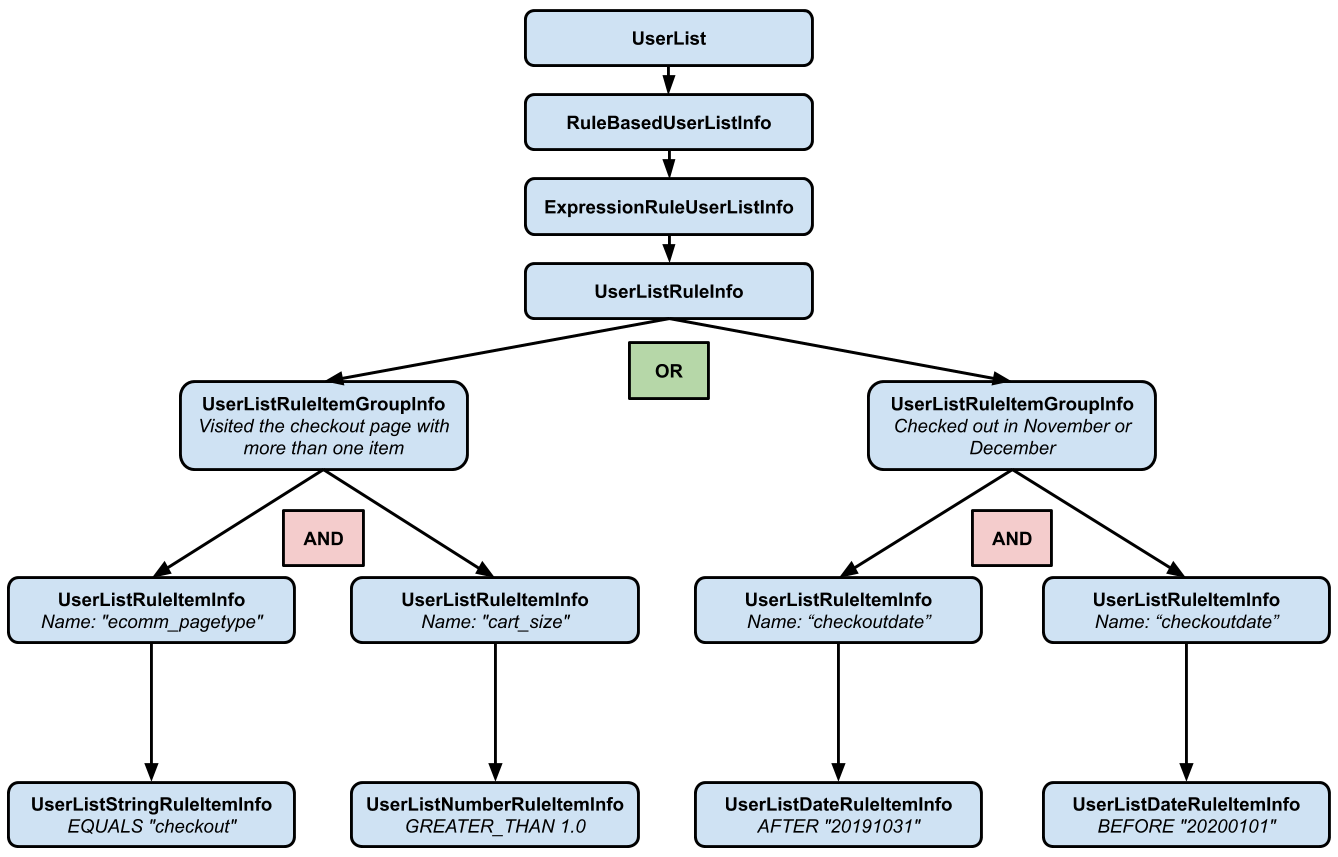Supponiamo che tu abbia un sito in cui hai configurato diversi parametri del tag di remarketing personalizzati per acquisire i seguenti attributi degli utenti:
event: la categoria di pagina sul tuo sito, ad esempio pagamento, carrello e così via.cartsize: il numero di articoli nel carrello degli acquisti di un utente.checkoutdate: la data in cui un utente ha effettuato il check-out. Imposta questo parametro solo quando un utente ha effettivamente completato un acquisto.
Ti interessa mostrare più impressioni agli utenti che hanno inserito più articoli nei carrelli degli acquisti e hanno avviato la procedura di pagamento. Vuoi anche trovare gli utenti che hanno effettuato un acquisto a novembre e dicembre perché prevedi di organizzare una grande svendita sul tuo sito durante questi mesi.
Puoi descrivere questo insieme di utenti con una delle seguenti regole:
- Utenti che hanno visitato la pagina di pagamento e avevano più di un articolo nel carrello.
- Utenti che hanno effettuato il pagamento durante i mesi di novembre o dicembre.
Se un utente rientra nella categoria 1 o nella categoria 2, vuoi aumentare le offerte in campagne o gruppi di annunci specifici del 25%.
Oggetti
Dai un'occhiata alla struttura di un elenco utenti basato su regole. Un elenco basato su regole è
rappresentato nell'API Google Ads come
rule_based_user_list.
Il seguente diagramma mostra l'aspetto del
rule_based_user_list per questo
caso d'uso al termine dell'operazione.


